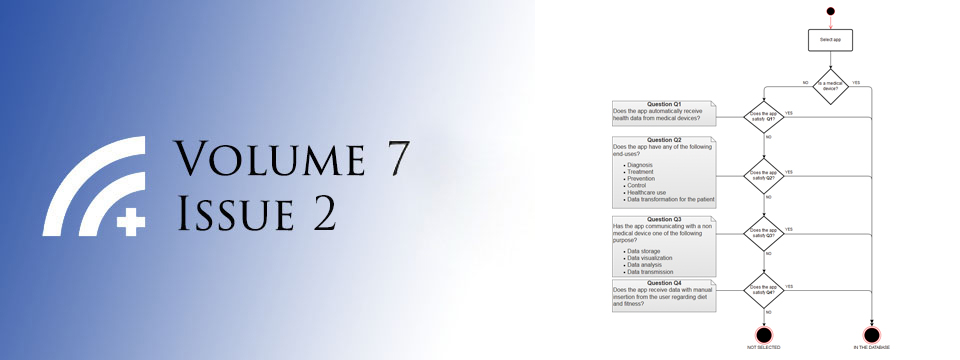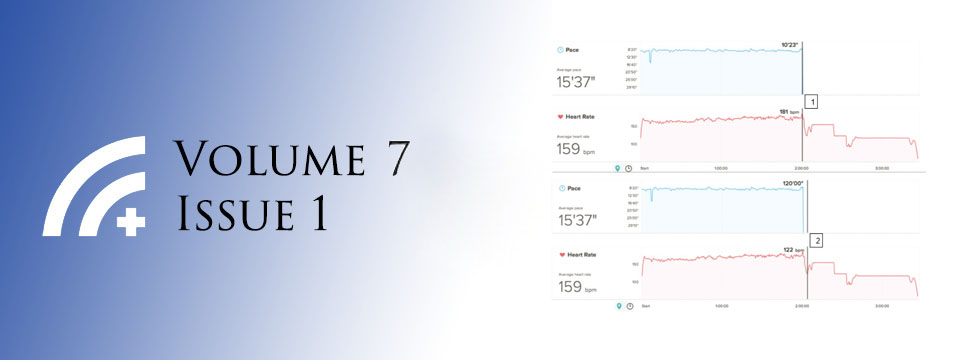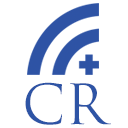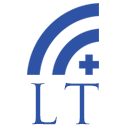Posted on Sep 16, 2012 in Original Article |
Dr Amy Chesser PhD1, Dr Nikki Woods PhD2, Dr Traci Hart PhD2, Dr Jennifer Wipperman MD1
1University of Kansas School of Medicine, Wichita, USA. 2Wichita State University, Wichita, USA
Corresponding Author: achesser@kumc.edu
Journal MTM 1:3:32-39, 2012
DOI:10.7309/jmtm.20
Background: The successful integration of mobile information technology (IT) and existing health information technology (HIT) requires a critical evaluation of factors that may impede implementation and end-user perceptions of new technology.
Purpose: Using a mixed-method approach researchers interviewed and issued questionnaires to a family medicine faculty and residents to ascertain: 1) usability of iPad features and functions in a practice setting, and 2) perceptions of barriers to and support for implementation of HIT in a clinical setting.
Methods: Two faculty physicians and one resident were interviewed to discuss the HIT infrastructure for the clinical site, as well as attitudes and preferences about iPad usability. Qualitative data was transcribed and analyzed. Resident and faculty physicians (n=42) from a family medicine residency completed an American Medical Association survey on HIT readiness. Descriptive and non-parametric statistics were tabulated.
Results: Both interview and survey participants reported individual readiness for HIT adoption, while listing environmental barriers. Interview participants also described physical and software features of the iPad they would find useful in practice. Survey respondents reported clinical staff readiness as a strength for adoption of HIT.
Conclusion: Participants reported readiness to integrate HIT into clinical practice and have a clear idea of useful device features. HIT adoption may be hampered by environmental factors, and future research should focus in this area.
Posted on Sep 16, 2012 in Original Article |
Dr George Kong PhD1, Dr Jonathan Kam MBBS1
1Royal Victorian Eye and Ear Hospital, Melbourne, Australia
Corresponding Author: georgekong008@gmail.com
Journal MTM 1:3:40-45, 2012
DOI:10.7309/jmtm.21
Background: Eye screening programs have been effective in reducing the burden of eye diseases in the developing world. Most use paper recording systems which are prone to misplacement and are inefficient for auditing purposes. Digital data collection via mobile devices may prove more efficient, but reliable strategies information sharing between devices in rural settings remain an issue. This paper examines the speed and range of use of Mobile Tethering technology to synchronize data across devices, and hence the suitability of such devices in the eye screening setting.
Methods: The data synchronization feature of eyePatients software for iPhone and iPad was tested using an Apple iPhone 4 as the central router, with Mobile Tethering activated. Apple iPad 2 devices were connected to the wireless local area networks (WiFi) generated by the iPhone 4. The linear range of data synchronization and the effect of corners and barriers on synchronization were tested.
Results: Synchronization was rapid, taking between 1.0-1.5 seconds to complete when linear distance was within 30 meters. Beyond 34 meters considerable slowing was noted and no successful connections were able to be established beyond 40 meters. A single corner had no statistically significant effect on the maximum range of a single tether connection, but two corners or a door barrier had a small but statistically significant reduction on range.
Conclusion: Mobile Tethering provides a reliable and fast connection between multiple devices that can be used for the synchronization of large amounts of data required for eye screening purposes.
Posted on Sep 16, 2012 in Case report |
Prof Fereydoun Pourdanesh DDS1, A/Prof Ashraf Sayyedi DDS2, Prof Abdolreza Jamilian DDS3, Prof Masoud Yaghmaei1
1Department of Oral and Maxillofacial Surgery, Shahid Beheshti University of Medical Sciences, Tehran, Iran, 2Dental Research Center, Research Insitiute of Dental Sciences, Shahid Beheshti University of Medical Sciences, Tehran, Iran, 3Department of Orthodontics, Center for craniofacial research, Islamic Azad University, Tehran, Iran
Corresponding Author: info@jamilian.net
Journal MTM 1:3:46-49, 2012
DOI:10.7309/jmtm.22
Nowadays, there is an increasing use of mobile phones as a part of telemedicine to aid in the management of various health conditions. There are numerous reports of using mobile phones as a tool for sending and receiving short text message (SMS) in medicine. Aside from keeping patients continuously in touch with their health care providers, mobile phones can also be a useful tool for providing doctors with valuable information. A useful adjunct of many mobile phones is its ability to take clinical pictures.
In this study we present a case series where mobile phone photos taken by the patient were later used to aid in the diagnosis and management of various maxillofacial conditions.
Posted on Sep 16, 2012 in Letters |
A/Prof Melissa Parker MD1,2
1Pediatric Critical Care Medicine and Pediatric Emergency Medicine, McMaster Children’s Hospital,2Pediatric Emergency Medicine, The Hospital for Sick Children, Adjunct Clinical Assistant Professor of Pediatrics, University of Toronto in Medicine.
Corresponding Author: parkermj@mcmaster.ca
Journal MTM 1:3:50-52, 2012
DOI:10.7309/jmtm.23
Mobile technology has become increasingly prevalent in the workplace. Smart phones, tablets, and other forms of personal digital assistant have particular appeal for professionals seeking tools to enhance productivity. Research in particular requires the capacity to collect and process data in an efficient and cost effective manner. Investigators are increasingly turning to mobile devices for solutions as programs and data handling capabilities become more sophisticated. With these developments, however, arises the need to contemplate and address ethical considerations relevant to mobile technology use in the research context.
Posted on Sep 16, 2012 in Letters |
Susan McClean1, Dr Mahendra Perera MBBS1
1Albert Road Clinic, Melbourne, Australia
Corresponding Author: mcLeans@ramsayhealth.com.au
Journal MTM 1:3:53-55, 2012
DOI:10.7309/jmtm.24
Albert Road Clinic is an acute care private psychiatric hospital with active and committed Psychiatrists who work with us. The Albert Road Clinic Consulting Suites is based within the hospital and this space is tenanted by approximately 40 consultant psychiatrists who work either full time or on a sessional basis in their private practice. Several psychiatrists approached me to try and resolve the issue of their patients not attending for scheduled appointments; the non- attendance has potential detrimental effects for the patient (who may have forgotten the appointment) leading to possible clinical risk. The other consequences have been an adverse effect on the consultant psychiatrists’ business and the inability to back fill the appointment for which the patient has not attended.
Posted on Aug 10, 2012 in News |
The days of the trusty watch dog are over. Say hello to the 21st Century boys and girls where all you have to do is switch on your grandad’s iPhone and it’ll watch your grandad for you! Thanks to SecuraTrac and Vital Connect potential medical emergencies can be managed both effectively and in record time giving you,your loved ones and even your doctors some well deserved peace of mind. From epileptics to patients with heart failure the uses of this app are endless, and the technology’s fairly simple. SecuraTrac’s GPS enabled tracking devices are being coupled with Vital Connect’s body sensors to produce SecuraFone Health, an Android and Apple iOS product which will monitor respiratory rates, pulse rates, temperatures and other vitals and immediately alert the health professionals and care givers if any change is recorded.
How is this all possible you may ask? Well, Hermosa Beach, California based SecuraTrac will use its already available driver tracking software and Vital Connect will provide the biosensor, in the form of a water resistant patch worn on the chest or back. A single patch will be effective for 2-3 days at a time and will give caregivers a sense of security in always knowing where their patients, children or parents are and how they’re doing.
And there’s more. SecuraTrac CEO, Chris Holbert states that the app will be available in the form of a monthly service which will be linked to a 24/7 emergency response center with trained health care professionals that can respond to health emergencies as they happen, when they happen. The release date for this mobile personal emergency response system (or mPERS for short) is set for the end of this year but there has still been no official word on the pricing or the type of wireless technology that will be used. SecuraTrac already offers a tranditional active system called LifeTrac mobile protector which requires patients to hit a panic button when they require assistance.
Links:
http://www.securatrac.com/home/










